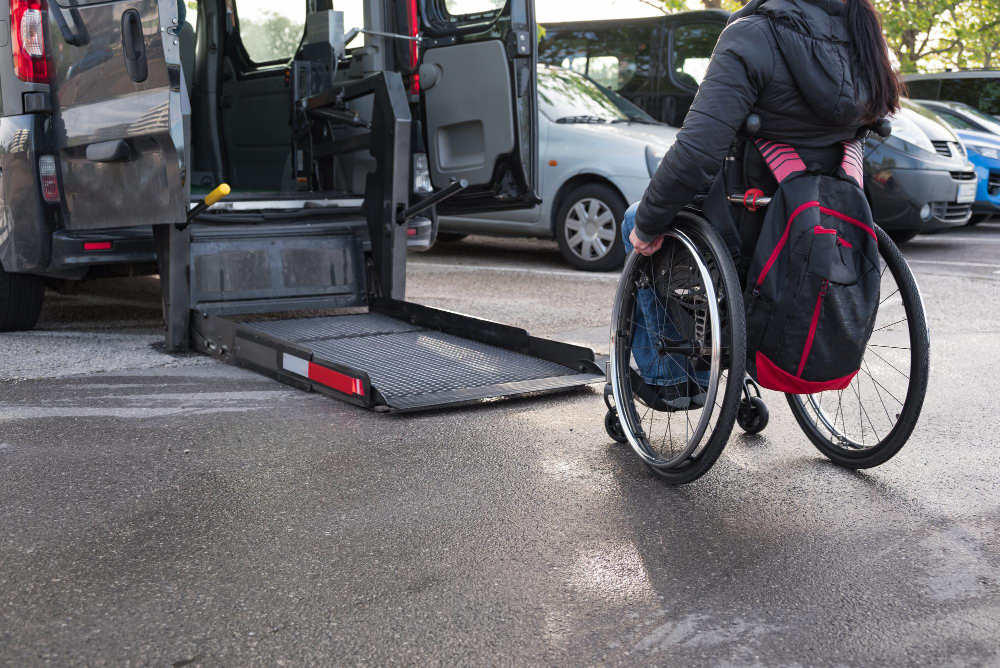
Finding reliable transportation can be challenging for individuals with disabilities. Standard vehicles often lack the necessary accommodations, making simple trips to medical appointments, work, or social events feel impossible. Fortunately, specialized disabled transportation services are designed with comprehensive accessibility features that prioritize safety, comfort, and independence.
Understanding what accessibility features to look for helps you make informed decisions when choosing a transportation provider. Whether you need wheelchair accessibility, assistance with mobility devices, or specialized safety equipment, knowing these features ensures you receive the quality service you deserve.
This guide explores the key accessibility features that make disabled transportation services safe and effective, helping you identify providers that meet your specific needs.
Wheelchair Accessibility and Accommodation
Wheelchair Lifts and Ramps
Professional disabled transportation services feature hydraulic wheelchair lifts or deployable ramps that provide smooth, safe entry and exit. These systems can accommodate various wheelchair sizes and weights, including power wheelchairs and scooters. Quality lifts operate quietly and smoothly, reducing anxiety during boarding.
Wheelchair Securement Systems
Once inside the vehicle, wheelchairs must be properly secured using a four-point tie-down system. This includes floor-mounted anchor points and retractable straps that hold wheelchairs firmly in place during transport. The securement system prevents movement during acceleration, braking, and turns, ensuring passenger safety throughout the journey.
Wheelchair-Accessible Seating Areas
Vehicles designed for disabled transportation feature designated wheelchair spaces with adequate headroom and maneuvering space. These areas allow wheelchairs to position comfortably without blocking emergency exits or interfering with other passengers.
Mobility Device Support
Walker and Mobility Aid Storage
Transportation vehicles should include secure storage areas for walkers, canes, crutches, and other mobility devices. These storage compartments keep equipment organized and prevent damage during transport while ensuring quick access when needed.
Transfer Assistance Equipment
Some passengers may transfer from wheelchairs to vehicle seats. Quality transportation services provide transfer boards, gait belts, and other assistive equipment to facilitate safe transfers when requested.
Safety and Emergency Features
Emergency Communication Systems
Modern disabled transportation vehicles include emergency communication systems that allow direct contact with dispatch or emergency services. These systems provide peace of mind and ensure help is available if needed during transport.
First Aid Equipment
Professional services maintain first aid kits and basic medical supplies onboard. Drivers often receive training in basic first aid and CPR, providing additional safety assurance for passengers with medical conditions.
Climate Control and Air Quality
Proper temperature control and air filtration systems are essential for passengers who may be sensitive to environmental conditions. Quality vehicles maintain comfortable temperatures and clean air circulation throughout the journey.
Driver Training and Assistance
Disability Awareness Training
Professional drivers receive comprehensive training on disability awareness, proper etiquette, and communication techniques. This training ensures respectful, patient service that recognizes individual needs and preferences.
Physical Assistance Capabilities
When requested and appropriate, trained drivers can provide assistance with boarding, securing mobility devices, and basic support during transport. This assistance is always offered respectfully and with attention to passenger dignity and independence.
Route Planning and Navigation
Experienced drivers understand the importance of smooth routes that minimize discomfort. They plan trips to avoid construction, heavy traffic, and roads with excessive bumps or steep grades when possible.
Vehicle Comfort and Design Features
Low-Floor Design
Many modern accessible vehicles feature low-floor designs that reduce the angle of ramps and make boarding easier. This design also provides more interior space and improved maneuverability for wheelchair users.
Wide Doorways and Aisles
Doorway widths of at least 32 inches and clear aisle space allow easy movement for wheelchairs and other mobility devices. These design features prevent bottlenecks and reduce boarding time.
Adjustable Seating Options
For passengers who can transfer to vehicle seats, adjustable seating with armrests and proper support enhances comfort during longer trips. Seats should accommodate various body sizes and provide adequate support.
Technology Integration
GPS Tracking and Communication
Modern disabled transportation services use GPS tracking systems that allow real-time monitoring of vehicle locations. This technology enables accurate arrival time estimates and helps coordinate pickups and drop-offs efficiently.
Automated Scheduling Systems
Advanced scheduling systems help coordinate multiple pickups and appointments while minimizing wait times. These systems consider individual passenger needs and appointment schedules to optimize routes.
Choosing the Right Service Provider
Certification and Compliance
Look for transportation providers that maintain proper certifications and comply with Americans with Disabilities Act (ADA) requirements. These standards ensure vehicles meet minimum accessibility requirements and safety standards.
Insurance and Liability Coverage
Verify that transportation providers carry adequate insurance coverage for passengers and equipment. This protection is essential for your safety and financial security.
Service Reliability and Punctuality
Choose providers with strong reputations for on-time service and reliability. Consistent, dependable transportation is crucial for medical appointments and other time-sensitive commitments.
Your Path to Accessible Transportation
Accessible transportation should never be a barrier to living independently and participating fully in your community. By choosing a service provider that offers comprehensive accessibility features, professional drivers, and reliable service, you can travel with confidence and dignity.
Quality disabled transportation services understand that every passenger has unique needs and preferences. The best providers go beyond basic compliance to offer genuine care, respect, and personalized service that makes every journey comfortable and stress-free.
If you're seeking disabled transportation service in Orlando, FL, contact Comfort Ride Transportation today to schedule an appointment. Our experienced team is committed to providing safe, reliable, and comfortable transportation that meets your specific accessibility needs.